If you’re trying to decide where to build your next site, Webflow or Wix, you’re not alone. Teams everywhere are asking the same question in 2026, and the truth is, it depends on what kind of site you’re building.
Over the past year, both platforms have evolved fast. Webflow focused on giving designers more power and flexibility, while Wix made big strides in speed and simplicity.
In this guide, we’ll look at what’s changed, how they compare in design, CMS, SEO, and pricing, so you can pick the one that fits your team and timeline.
What is Webflow?
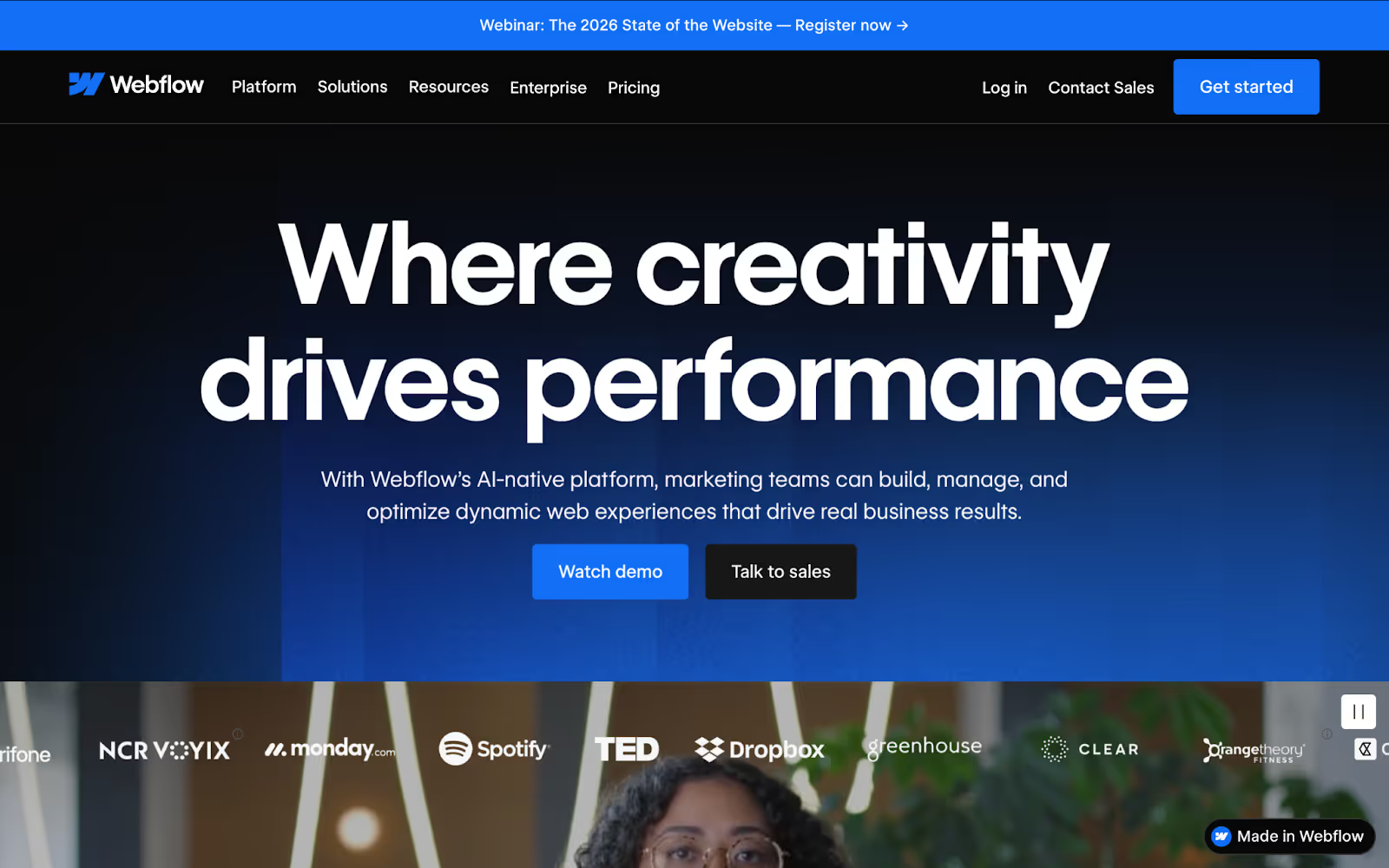
Webflow is a visual web design and development platform built for teams that care about control and performance. It lets you design visually while generating clean HTML, CSS, and JavaScript behind the scenes. Its CMS makes managing dynamic content simple, and the built-in hosting keeps everything fast and secure.
In 2025, Webflow introduced a next-gen CMS and Code Components, making it easier for teams to blend visual design with developer logic and scale large, content-driven sites.
Who it fits best:
- Growing teams that need a production-grade CMS, strong SEO controls, and built-in hosting
- Agencies and product teams that want designer-led builds with reliable performance
- Projects that rely on programmatic content workflows or API-driven publishing
What is Wix?
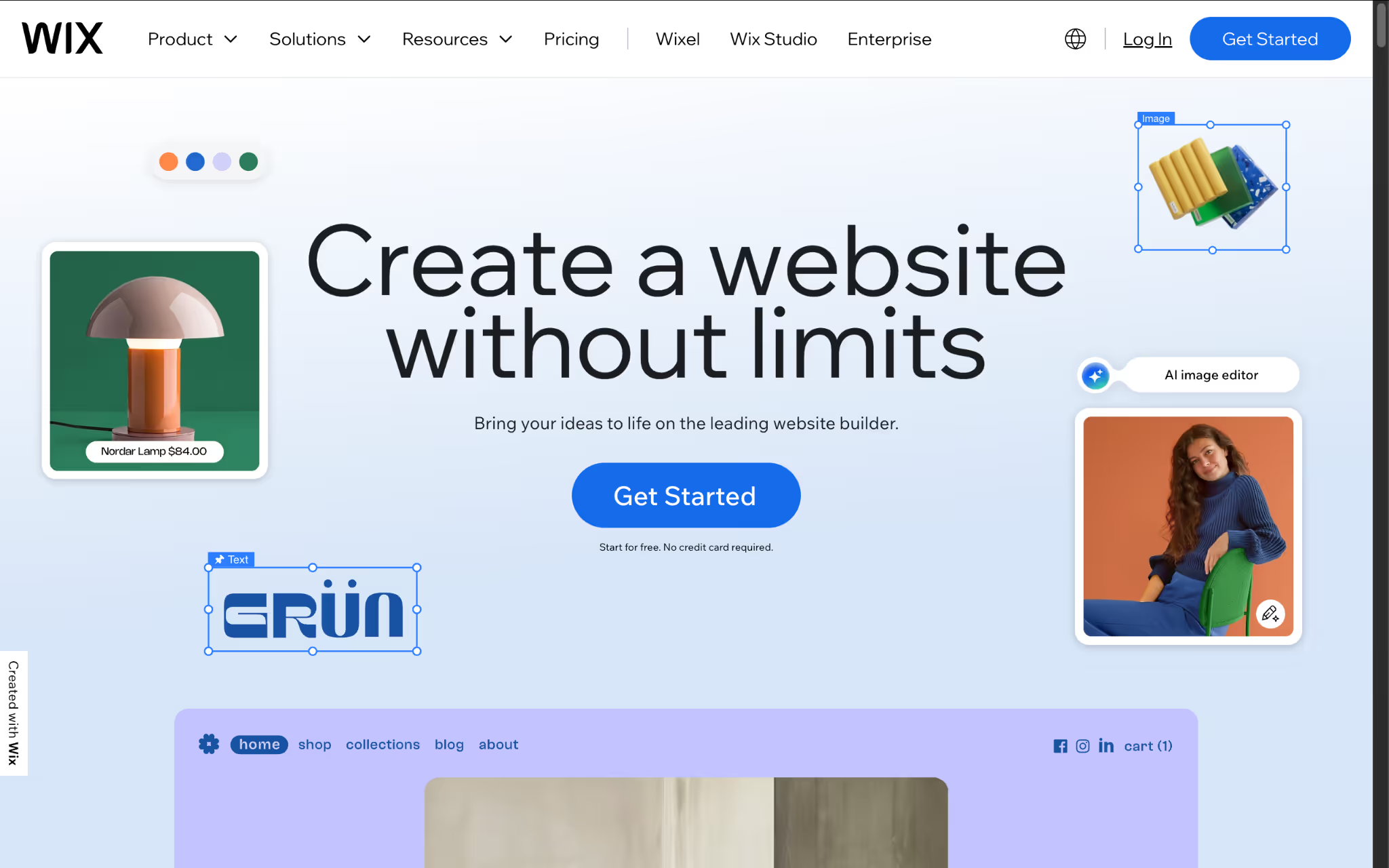
Wix is a website builder focused on simplicity and speed. It offers a drag-and-drop editor, ready-made templates, and hundreds of built-in apps that help anyone create a functional website without coding. Hosting, analytics, and SEO tools come included, which makes setup fast and maintenance light.
In recent updates, Wix improved its editor experience, added AI-assisted design tools, and expanded ecommerce features, making it easier for small businesses to launch and grow online.
Who it fits best:
- Small businesses and individuals who want to launch quickly with minimal setup
- Non-technical users who prefer guided templates and built-in apps
- Projects that value convenience and ease over deep customization or exportability
Quick Comparison: Webflow vs Wix
Before we get into details, here’s a quick snapshot of how Webflow and Wix stack up against each other.
Head-to-Head Comparisons
Now that you’ve seen the high-level differences, let’s dig deeper.
In this section, we’ll look at how Webflow and Wix actually compare in everyday use, from how their editors feel to how they handle content, SEO, and collaboration.
Each part focuses on what matters most when choosing a builder in 2026: speed, control, scalability, and workflow fit.
Editor and learning curve
Webflow
Webflow’s Designer feels like visual front-end work. You use the box model, classes, and style panels to build layouts that translate directly to clean HTML and CSS. It takes time to learn, but once you know it, you can build predictable, reusable components and hand off production-ready pages. If you want help structuring projects or onboarding a team, see our Webflow development services.
Wix
Wix is template and block driven. Pick a section, swap content, and publish. It is fast and forgiving, which is perfect for owners who need a site up quickly. The tradeoff is less control over fine layout and breakpoints, so bigger redesigns or migrations can be harder. Planning to move later? Check the Wix to Webflow migration checklist before you commit.
If you need repeatable design systems and production-ready output, Webflow is worth the learning curve. If you want speed and zero setup, Wix gets you there faster.
Design and animations
Webflow
Webflow gives designers full creative control. You can build layouts from scratch, set grids, work with flexbox, and control every pixel on the page. Instead of relying on templates, you design visually using the same logic as CSS. This makes it easy to create unique layouts, build responsive pages that actually stay consistent across breakpoints, and keep brand design sharp.
On the animation side, Webflow’s built-in Interactions panel lets you add scroll triggers, hover effects, and timeline animations visually. You can create subtle transitions or advanced motion sequences without writing code. It’s a solid middle ground between design freedom and developer precision.
If you care about originality, responsiveness, and smooth on-brand motion, Webflow gives you the flexibility to do it all in one place.
Wix
Wix focuses on templates and speed. You choose a design, adjust sections, and swap in content. The layout system is more rigid, so building from scratch or changing grid logic later can be tricky. What you gain is time: a full website can come together in a single day if you stick to what’s provided.
For motion, Wix includes one-click animation presets like fade-ins, slides, and parallax effects. They’re easy to apply but not as flexible. You can’t chain complex sequences or edit easing curves. For many small sites, that’s completely fine. The animations are simple, lightweight, and give a bit of polish without extra effort.
If you want fast, polished visuals and don’t need deep customization, Wix is the right choice. If you want full control over layout, animation timing, and responsive behavior, Webflow is the right choice.
CMS and content management
Webflow
Think of Webflow as a proper CMS that actually behaves like one. You make Collections for each content type, add fields (text, rich text, reference, multi-reference, option lists), then bind those fields to template pages. Want an author system, tag filters, or repeatable layouts that update automatically? Done. Need programmatic publishing? Use the API or plug into Zapier or Make. If you want someone to help set these for you, check out our Webflow development services
Wix
Wix is simpler. Create collections, use repeaters, and surface items with the Editor or Velo. It is fast for blogs, landing pages, and small product lists. But when your content needs nested relationships or frequent automated imports, it starts to creak. If you plan to move off Wix later, follow our Wix to Webflow migration checklist so nothing gets lost.
Hosting and SEO
Webflow
Webflow hosts your site on a global CDN and serves clean, lightweight code that helps pages load fast. You get full control over technical SEO settings like meta tags, canonicals, redirects, sitemaps, and structured data. These controls make it easy to optimise your site for speed and search visibility without touching external tools.
PageSpeed Insights scores are usually stronger on Webflow sites because there’s less code bloat and fewer dependencies. You can fine-tune load order, compress assets, and even connect analytics and marketing scripts directly in the dashboard. If you want deeper SEO improvements or a full audit, our page on Webflow SEO covers everything from schema to site structure. For ongoing performance monitoring, our Webflow maintenance services keep your site fast and healthy.
Wix
Wix takes care of hosting automatically. The infrastructure is stable, secure, and backed by built-in optimisations like image compression and caching. You can manage basic SEO settings in the editor, including titles, meta descriptions, and redirects, and the SEO Wiz tool helps beginners set up their site step by step. For small sites, this setup is more than enough.
The tradeoff is that you don’t get the same level of technical control. The code base is heavier, and adding too many apps can slow pages down. You can improve speed by compressing images and limiting third-party widgets, but the platform still handles most of the backend for you.
If you want full control over performance, SEO tags, and long-term optimisation, Webflow is the right choice. If you prefer a setup that takes care of hosting and SEO basics for you, Wix is the right choice.
Collaboration and handoff
Webflow
Webflow supports staged workflows and role-based editing. Designers can lock components, create reusable symbols, and publish to a staging environment. Non-technical editors use the Editor app to update content without touching layout, which reduces accidental style changes and speeds up reviews. For agencies, this makes handoff smoother and safer, and it ties directly into maintenance and monitoring workflows like our Webflow maintenance service.
Wix
Wix is built for fast edits by a single owner or a very small team. The editor is simple and forgiving, so content changes are quick. It does not offer the same level of staging or granular role controls, so larger teams need clear processes and a short author guide to avoid breaking layouts. For small sites this tradeoff often makes sense.
If you want staged releases, role-based access, and a smoother designer-to-editor handoff, Webflow is the right choice. If you want the fastest, lowest-friction editor for a one-person or two-person site, Wix is the right choice.
Pricing and Total Cost of Ownership
Pricing often looks simple at first, but the real difference shows once your site starts growing. In 2026, both Webflow and Wix have flexible plans, but their long-term costs vary depending on how complex your site is and how much you want to customise it.
Below is a quick breakdown of what you can expect for three common use cases.
1. Designer Portfolio or Small Business Site
Webflow: Around $168–$240 per year (Basic or CMS plan with hosting)
Wix: Around $120–$180 per year (Combo or Unlimited plan)
Wix is cheaper for small, static sites. Webflow gives you cleaner code, faster performance, and more design flexibility if you plan to scale later.
2. SaaS Marketing Site or Multi-Page Website
Webflow: Around $300–$600 per year (CMS or Business plan depending on traffic and CMS size)
Wix: Around $240–$480 per year (Business or Core plan, plus paid apps for forms or automations)
Both platforms can handle marketing sites, but Webflow scales better for structured content and SEO. Wix is easier to launch fast, while Webflow is better for long-term growth and integrations.
3. Content-Heavy or Ecommerce Website
Webflow: Around $1,000–$3,000+ per year (Business or Enterprise plan with higher CMS limits and custom traffic thresholds)
Wix: Around $600–$1,500+ per year (Business VIP or Enterprise plan, plus paid add-ons and app fees)
Webflow is stronger for content-heavy, dynamic, or enterprise-grade websites. Wix works for smaller stores and simpler product catalogues but may need more plugins to match advanced setups.
Key factors that affect total cost
CMS usage: Webflow pricing increases with CMS items and collection size. Wix includes a basic CMS inside its Business and Core plans but offers fewer options for complex relationships.
Apps and integrations: Wix relies heavily on its app marketplace. Each plugin adds monthly fees. Webflow includes built-in SEO, forms, and integrations that reduce external costs.
Seats and collaboration: Webflow’s workspace pricing is based on user roles in higher plans. Wix is simpler for small teams but less flexible for agencies managing multiple clients.
Hosting and performance: Webflow’s hosting is built into every plan and includes global CDN coverage. Wix handles hosting automatically, but with fewer options for performance tuning or export.
In short, Webflow costs more upfront but includes scalable hosting, structured CMS, and stronger SEO tools that lower long-term costs. Wix is more affordable at the start and works best for smaller sites or teams that value speed and simplicity over flexibility.
For a closer look at plan limits and when to upgrade, see our Webflow pricing guide.
Best Practices for Building in 2026
1. Start with the content model:
Sketch Collections and relationships before you build. Plan content types, references, and fields first so you avoid refactors later.
2. Design with performance in mind
Use modern image formats like WebP or AVIF, enable lazy loading, and keep third-party scripts minimal. Measure LCP and CLS on key pages and fix the biggest offenders first. Our Webflow maintenance service can help with ongoing PageSpeed checks.
3. Build reusable components:
Create components for headers, footers, cards, and forms so edits stay predictable. Consistent classes reduce accidental styling changes and speed up future updates.
4. Automate where it saves time
Use the Webflow API, Zapier, or Make to automate repetitive publishing tasks like product feeds or job listings. For complex syncs and reliable automation, see our Webflow development services.
5. Keep third-party scripts under control
Audit analytics, marketing pixels, and chat widgets regularly. Load noncritical scripts asynchronously and test their impact on performance before you deploy.
6. Plan for portability and redirects
Map your URLs and keep a redirect plan ready even if you do not plan to migrate soon. That makes redesigns or platform moves painless. If you are moving from Wix, follow the Wix to Webflow migration checklist.
7. Add structured data for AEO
Use JSON-LD for FAQ, Article, and Product schema where it helps. Clear answers plus structured markup increase the chance of rich results and improve how LLMs and search UIs surface your content. See examples on our Webflow SEO page.
8. Focus on accessibility and clarity
Use accessible color contrast, descriptive alt text, and keyboard-friendly navigation. Small accessibility wins improve usability and help SEO.
9. Test on staging, then monitor
Preview on staging, run a crawl, and test forms, redirects, and analytics before you flip DNS. After launch, monitor Search Console and traffic for two weeks and fix issues quickly.
Conclusion
Choosing between Webflow and Wix isn’t about which tool is better overall, it’s about what fits your needs right now.
If you want complete design freedom, a structured CMS, and a platform that scales with your business, Webflow is the smarter long-term choice. If you need something quick, easy, and affordable to launch today, Wix will do the job perfectly. And if you are looking for more options instead of Wix, checkout our article on best Wix alternatives.
Whichever way you go, plan your build before you start, structure your content, think about performance, and keep SEO in mind from day one.
And if you ever outgrow Wix or want to set up a Webflow site that performs from the start, check out our Webflow development services or follow our Wix to Webflow migration checklist.

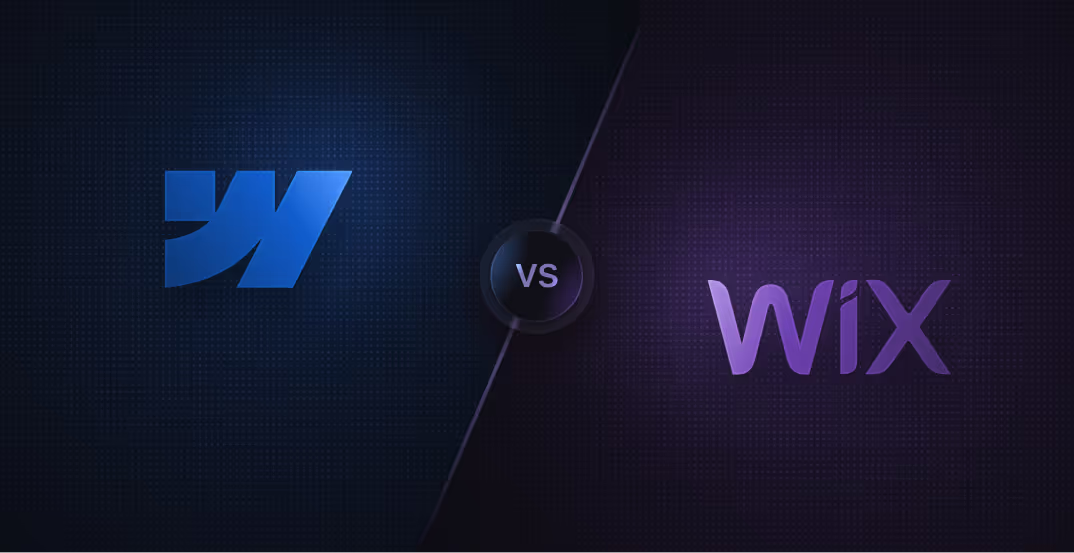




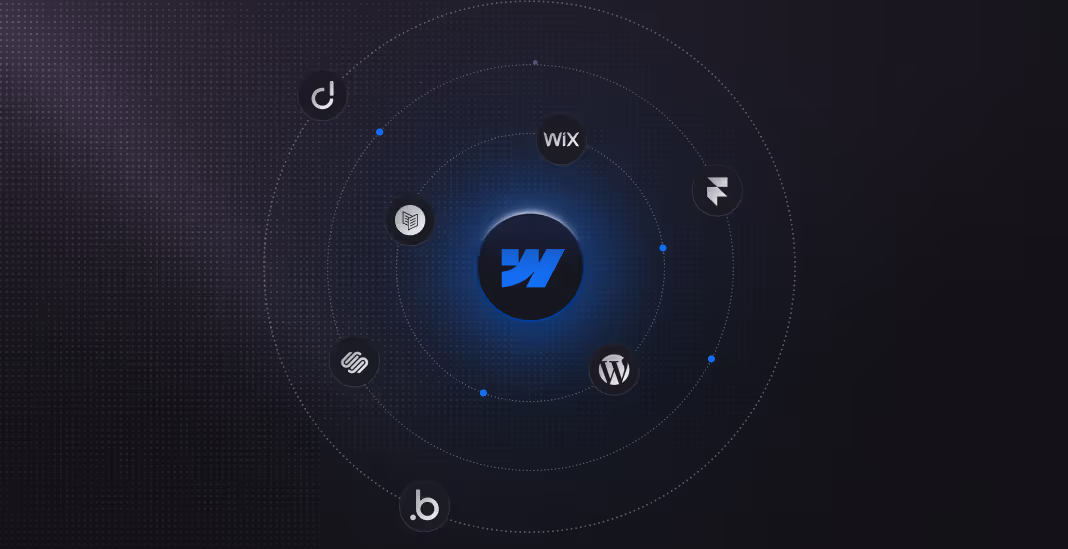
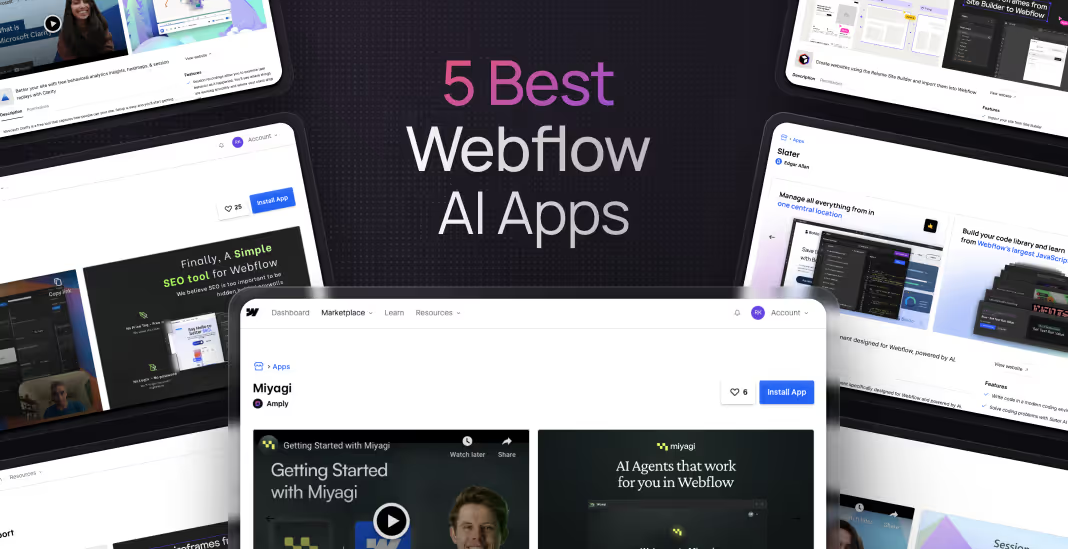
.avif)




